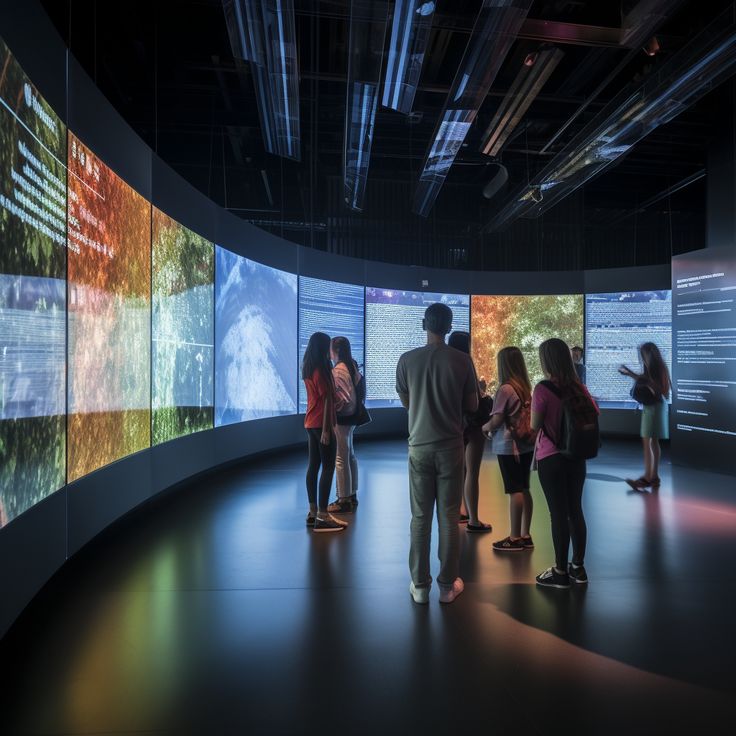
Experiential Design: The Future of Real Estate Marketing
Share
In today’s hyper-competitive real estate market, simply showing floor plans and site renderings no longer cuts it. Buyers, investors, and tenants expect more. They want to feel the space—even before it exists.
Enter experiential design — an emerging discipline that transforms how real estate projects are marketed, sold, and perceived. Whether it's luxury residential towers, commercial office complexes, or retail developments, developers worldwide are using experiential design to create emotional connections, build buyer confidence, and close deals faster.
In this guide, we’ll explore why experiential design is becoming the new gold standard for real estate marketing and how brands can leverage it to stay ahead.
What Is Experiential Design in Real Estate?
Experiential design blends architecture, branding, technology, and storytelling to create immersive environments that:
-
Engage multiple senses
-
Build emotional resonance
-
Help buyers visualize life in the space
-
Strengthen brand positioning
-
Shorten sales cycles
Unlike traditional sales galleries that rely heavily on brochures and static models, experiential spaces bring the future property to life in ways that feel personal, emotional, and memorable.
Why Experiential Design Works So Well for Real Estate
1. Overcomes Buyer Hesitation Real estate is often the biggest purchase of a buyer's life. Experiential design reduces uncertainty by giving customers a tangible sense of the future space.
2. Creates Differentiation In crowded markets, experience-driven spaces make a project stand out from competitors.
3. Builds Emotional Attachment When buyers feel connected to a space, they’re more likely to commit.
4. Generates Buzz & Shareability Visually stunning spaces encourage visitors to share photos and videos, driving organic marketing.
5. Boosts Investor Confidence For large-scale commercial or luxury developments, immersive design signals project quality and vision.
Key Components of Experiential Real Estate Marketing
1. Experience Centers, Not Sales Offices
Modern experience centers are fully branded spaces designed to immerse visitors in the project’s lifestyle promise. Key features include:
-
Full-size sample rooms or show flats
-
3D site models with projection mapping
-
Material bars for tactile exploration of flooring, countertops, and finishes
-
Multimedia brand films showcasing the development’s story
-
Fragrance diffusion to create mood
-
Dedicated VR and AR zones
2. Interactive Digital Tools
-
Virtual reality property walkthroughs
-
Touchscreen master plans that highlight amenities, views, and layouts
-
AI-powered customization tools for interior finishes
-
Live construction progress tracking via digital dashboards
3. Brand-Integrated Design Language
Every visual element within the experience center should reflect the brand story:
-
Consistent color palettes
-
Signature fonts and iconography
-
Story-driven wall graphics
-
Sculptural installations inspired by project themes
4. Sensory Branding
-
Curated lighting design for mood control
-
Customized scent profiles that enhance memorability
-
Ambient soundscapes aligned with brand positioning
-
Temperature-controlled comfort zones for an elevated feel
5. Experiential Hoardings & Barrier Fences
The customer journey starts outside the construction site. Modern site hoardings are becoming sophisticated storytelling canvases:
-
LED-lit perimeter panels
-
Local art collaborations
-
Storyboards highlighting amenities, sustainability, and lifestyle appeal
-
QR codes for real-time project updates
The Indian Context: Why Experiential Design Is Exploding
-
Luxury Segment Growth: High-net-worth buyers expect elevated, global-standard experiences.
-
NRI & Overseas Buyers: Experiential design bridges the distance for remote investors.
-
Millennial Buyers: Younger buyers prioritize aesthetics, vibe, and Instagram-worthiness.
-
Institutional Investments: Commercial projects use experiential design to attract global tenants.
-
Cultural Shift: Indian developers are investing in lifestyle branding, not just square footage.
Experiential Design Across Real Estate Segments
Residential Projects
-
Fully-furnished sample apartments
-
Lifestyle video walls showcasing community life
-
Wellness zones with air quality and sustainability displays
-
Family-centric interactive kids zones
Commercial Developments
-
Dynamic LED lobby screens
-
Live energy efficiency dashboards
-
Co-working simulation zones for tenants
-
Customizable fit-out previews for corporate clients
Retail & Mixed-Use Spaces
-
Pop-up retail activations in pre-launch phases
-
Augmented reality wayfinding for shoppers
-
Branded art installations
-
Experiential pop-up events to drive early buzz
Luxury Hospitality & Resorts
-
Sensory lounges replicating guest experiences
-
Fragrance branding to mirror resort moods
-
AR destination previews for concierge services
Measurable ROI of Experiential Design in Real Estate
-
Higher Pre-Sales: Developers report 50%+ inventory bookings during pre-launch phases.
-
Faster Sales Cycles: Emotional buy-in reduces negotiation windows.
-
Reduced Marketing Costs: Organic social media content fuels free publicity.
-
Better Investor Confidence: Immersive experiences support fundraising and joint ventures.
-
Increased Brand Equity: Memorable experiences boost word-of-mouth referrals.
Future Trends: Where Experiential Real Estate Is Headed (2025+)
-
AI-Powered Personalization: Buyer profiles trigger customized tours and interiors.
-
Mixed Reality Tours: Seamless blending of AR, VR, and physical spaces.
-
Sustainability Storytelling: Real-time data displays on energy, water, and wellness features.
-
Gamified Interactions: Loyalty programs that reward repeat visits and referrals.
-
Immersive Digital Twins: Replicate entire projects online for global audiences.
The Space Crafter Studio Advantage
At Space Crafter Studio, we’ve spent years crafting spatial and experiential design solutions specifically for real estate clients. Our approach combines:
-
Deep understanding of buyer psychology
-
Story-first design philosophy
-
Seamless integration of branding, technology, and architecture
-
End-to-end execution—from hoardings to interiors to experience centers
We help transform:
-
Bare construction sites into buzzworthy community landmarks
-
Sales offices into lifestyle-driven experience galleries
-
Site hoardings into powerful brand billboards
-
Walkthroughs into immersive decision-making journeys
Sell The Experience, Not Just The Property
In the real estate market of the future, the winners won’t be those who simply sell square footage. They’ll be the brands that sell experiences, emotions, and confidence.
Experiential design isn’t just a marketing trend—it’s fast becoming the expectation. For developers who want to differentiate, de-risk sales, and build stronger brand value, investing in experiential design is no longer optional.
Ready to transform your real estate project into an immersive experience? Let’s collaborate.
